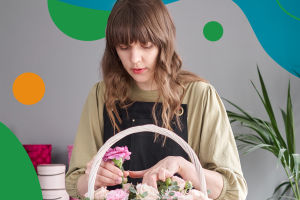Making pottery with your hands is a good craft activity. Have you ever tried hand pottery making? Let's learn the process of hand pottery making!
1. Choose clay
Beginners are recommended to buy easier-to-shape clay, ordinary clay or high white clay, medium white clay, and yellow clay, and can also buy rough clay.
2. Knead the clay
There are two types of clay, cow horn type, and chrysanthemum type, the role of this step is to knead out the air bubbles and excess water inside the clay, but also to make the clay tougher.
3. Forming
The molding techniques include hand-kneading, clay disc, clay slab molding, and pulling molding, and it is recommended for beginners to start with hand-kneading, not pulling molding.
4. Attaching accessories
Install the cup handle, and highlight some small decorations.
5. Drying
The finished clay embryo is put in a ventilated place to dry naturally, do not deliberately accelerate drying, it is easy to dry too fast shrinkage and uneven cracking.
6. Sintering
The ceramic is first fired, then glazed, and fired again in the kiln. The normal firing temperature is about 800 degrees, the role is mainly to make the billet body water volatilization, organic volatilization, combustion, carbonate decomposition, mineral composition, and structure of the initial formation so that the billet has sufficient strength to facilitate the decoration and glazing and other processing, reduce losses, to achieve rapid firing, improve product quality.
7. Painting
There are two kinds of overglaze and underglaze colors commonly used, if it is a tea set tableware class with food contact is recommended to use underglaze, flower pots or decorative ornaments can use overglaze, depending on personal preference to choose, pay attention to the firing temperature range when buying.
8. Glaze application
Methods include spraying glaze, dipping glaze, dripping glaze, swishing glaze, and glaze coating.
Pay attention to the glaze according to the use of methods and firing temperature to distinguish, buy glaze when paying attention to see whether it is matte or bright, brush or spray or dip, firing temperature is what range.
9. Kiln loading
Pay attention to the contact between the bottom of the embryo and the laminate, use an alumina sheet or tungsten nails to separate them, it is not recommended to use alumina powder, it is easy to spill and stick to the objects when loading the kiln.
10. Glaze firing
After loading the kiln and starting firing, there are many different ways of firing, commonly used methods are wood firing, gas firing, electric firing, etc.
Above, is the general process of hand-made pottery production.


